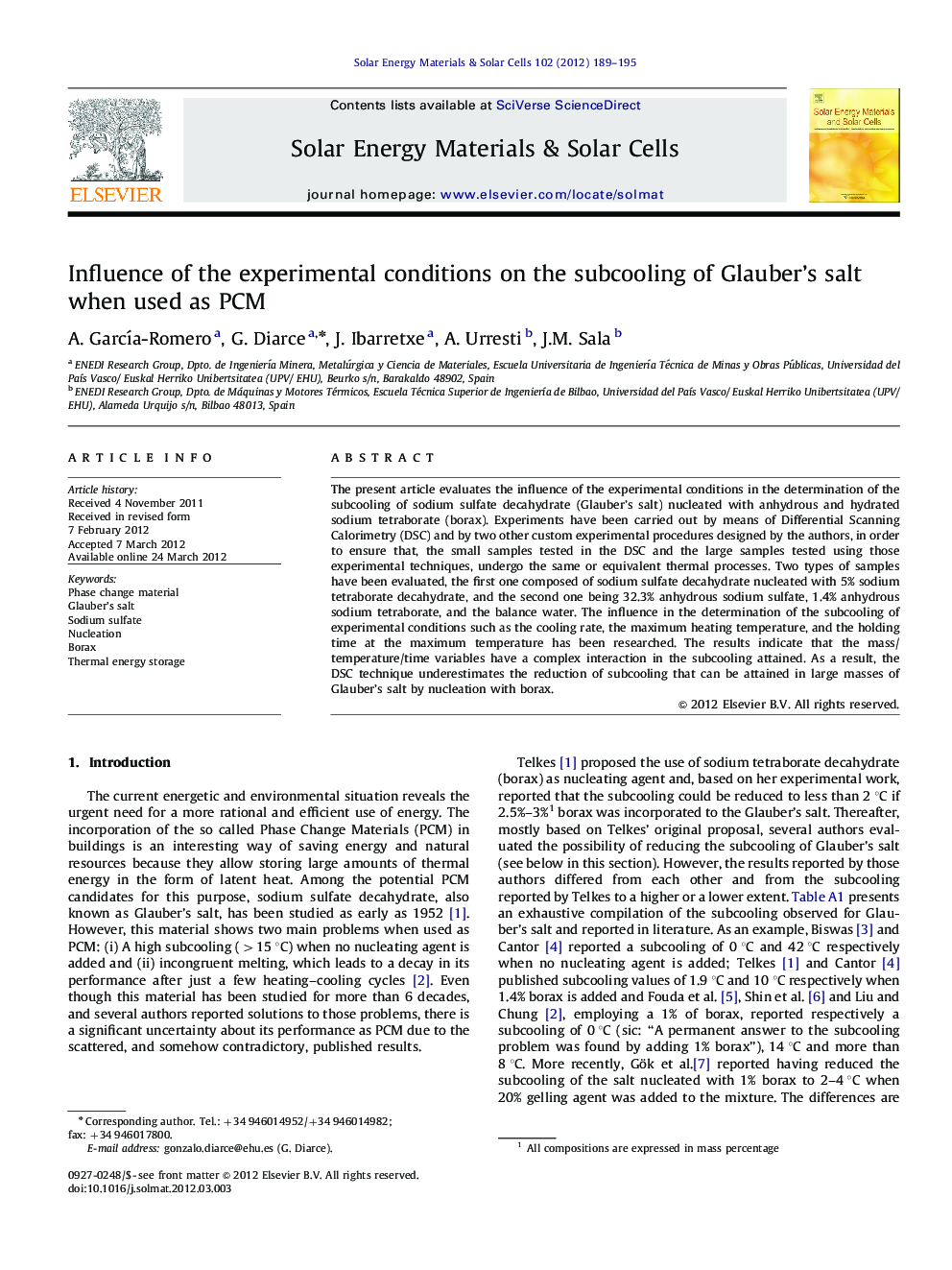| Article ID | Journal | Published Year | Pages | File Type |
|---|---|---|---|---|
| 78571 | Solar Energy Materials and Solar Cells | 2012 | 7 Pages |
The present article evaluates the influence of the experimental conditions in the determination of the subcooling of sodium sulfate decahydrate (Glauber's salt) nucleated with anhydrous and hydrated sodium tetraborate (borax). Experiments have been carried out by means of Differential Scanning Calorimetry (DSC) and by two other custom experimental procedures designed by the authors, in order to ensure that, the small samples tested in the DSC and the large samples tested using those experimental techniques, undergo the same or equivalent thermal processes. Two types of samples have been evaluated, the first one composed of sodium sulfate decahydrate nucleated with 5% sodium tetraborate decahydrate, and the second one being 32.3% anhydrous sodium sulfate, 1.4% anhydrous sodium tetraborate, and the balance water. The influence in the determination of the subcooling of experimental conditions such as the cooling rate, the maximum heating temperature, and the holding time at the maximum temperature has been researched. The results indicate that the mass/temperature/time variables have a complex interaction in the subcooling attained. As a result, the DSC technique underestimates the reduction of subcooling that can be attained in large masses of Glauber's salt by nucleation with borax.
► We studied the nucleation and subcooling of Glauber's salt with Borax. ► Maximum reached temperature and the time at that temperature define the subcooling. ► The subcooling is also dependent on the sample size but not on the cooling rate. ► Inconsistent results by other authors could be explained by these findings. ► The conclusions are relevant if Glauber's Salt is used in real scale PCM applications
